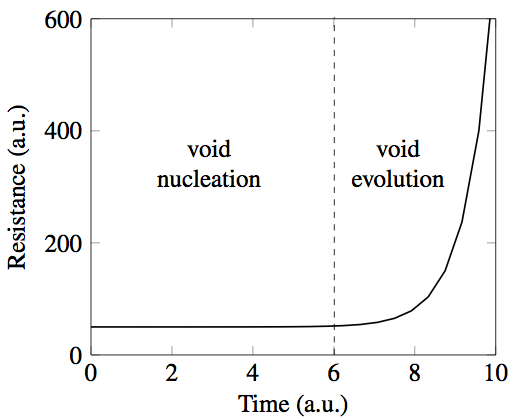Next: 1.4.2 Accelerated Lifetime Test Up: 1.4 Electromigration Failure Previous: 1.4 Electromigration Failure
 |
The first stage, namely the void nucleation or initiation phase, is characterized by the nucleation of a void which remains electrically undetectable. Therefore, the interconnect resistance remains constant during the entire void nucleation period. The nucleation of a void is the beginning of the second stage, which is called void evolution phase. During this phase, the void evolution mechanism leads to a morphological change of the void surface at a constant void volume. As soon as the void size becomes larger, a measurable resistance increase with time begins. The interconnect fails after a maximum tolerable resistance level is reached. The time-to-failure (TTF) is defined as the time needed to achieve this maximum tolerable resistance value. Consequently, the prediction of the electromigration TTF becomes crucial for the assessment of the interconnect reliability. The complete evaluation of the electromigration failure time of the given interconnect requires the summation of both void nucleation and void evolution times. The contribution of each component in the electromigration lifetime estimation depends on different kinetic and physical effects related to the different phases of failure.